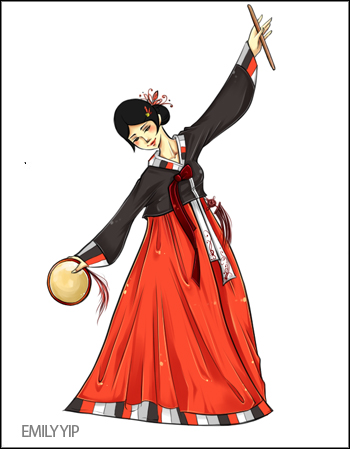
Introduction
Korean New Year is called both Solnal and Gujeong. It refers to New Year’s on Feb. 3 this year, based on the lunar calendar, and it is a three day celebration. In Korea, some Koreans also celebrate New Year’s on Jan. 1, known as Sinjeong.
Korean-Americans normally celebrate Sinjeong, but Gujeong is very well known and celebrated by many Korean-Americans. Most of the traditions that are performed during Gujeong are also performed on Jan. 1.
Clothes
During Solnal, it is traditional to dress up in traditional Korean clothes called hanbok.
“I feel [wearing a hanbok] goes back to my roots and it makes [New Year’s] a lot more traditional,” sophomore Jinny Yang says. “As a Korean-American I feel like I’m representing my Korean heritage by wearing them.”
Traditions
While wearing the colorful hanboks, one must make a deep bow to their elders such as parents, grandparents and great-grandparents. This bow is called sebae. During the traditional bow, the words “saehae bok manhi badeusayo” are said. This traditional statement translates into “please receive many blessings during the new year.”
“During the bow, boys have their right hand up, and girls have their left hand up,” says sophomore Sewon Kim. He also adds that “Our ancestors did [sebae] too and we do it right now so I’m proud of that.”
After the traditional bow, elders reward the bow with money.
Food
“We met up with family in one house and we ate rice cakes and bowed to our grandparents, uncles and aunts,” says junior Peter Moon about New Year’s Day on Jan. 1 last year. “Then we got money from them. The children went out and played and the adults stayed in and talked.”
Tteok, which are lucky Korean rice cakes, are eaten during this time. It is also customary to eat tteok-guk, or rice cake soup.
“It feels like I get one year older eating tteok-guk,” Kim says.
“I feel motivated after I eat tteok-guk,” says Yang. “I feel that tteok-guk strengthens me.”
Games/Activities
Korean folk games are also popular during this time. Some traditional games that are played during this time are yootnori, a board game which involves stick tossing, jegi-chagi, which is similar to kicking around a hacky sack, kite flying, and a game of riding on a seesaw.
“When my family meets for New Year’s, adults and children mostly play separately. But when we play yootnori, it’s different,” says senior Min-Jung Lee, “It’s a time where all family members, young and old … enjoy… time together. We break into teams by families and we get all intense. Sometimes we bet money.”
Tradition vs. Modernity
On the 15th day of the new month, which is the day of the first full moon, the Lunar New Year is ushered in with a ritual called Jishin Balpgi. It is a traditional folk festival that grew out of many collective village activities from over 4,300 years ago. During this ritual, gongs and loud drums are played to clean villages and cast away evil spirits.
The purpose of the festival is to usher in peace, health, and prosperity for the New Year, and let people renew personal and community ties.
“I enjoy the tradition,” sophomore Jaehee Park says of Korean New Year, “It deals with pride because it’s my ethnicity’s tradition. Celebrating it means you care.”
Korean New Year is a time where family can mingle, bond, and look forward to the upcoming year. It’s a time where many blessings are given and because of these blessings, one can live a prosperous and abundant life.




